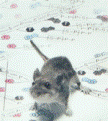Papers in the Biological Sciences

Jay F. Storz Publications
Document Type
Article
Date of this Version
2001
Abstract
Variance in reproductive success is a primary determinant of genetically effective population size (Ne), and thus has important implications for the role of genetic drift in the evolutionary dynamics of animal taxa characterized by polygynous mating systems. Here we report the results of a study designed to test the hypothesis that polygynous mating results in significantly reduced Ne in an age-structured population. This hypothesis was tested in a natural population of a harem-forming fruit bat, Cynopterus sphinx (Chiroptera: Pteropodidae), in western India. The influence of the mating system on the ratio of variance Ne to adult census number (N) was assessed using a mathematical model designed for age-structured populations that incorporated demographic and genetic data. Male mating success was assessed by means of direct and indirect paternity analysis using 10-locus microsatellite genotypes of adults and progeny from two consecutive breeding periods (n = 431 individually marked bats). Combined results from both analyses were used to infer the effective number of male parents in each breeding period. The relative proportion of successfully reproducing males and the size distribution of paternal sibships comprising each offspring cohort revealed an extremely high within-season variance in male mating success (up to 9.2 times higher than Poisson expectation). The resultant estimate of Ne/N for the C. sphinx study population was 0.42. As a result of polygynous mating, the predicted rate of drift (½Ne per generation) was 17.6% higher than expected from a Poisson distribution of male mating success. However, the estimated Ne/N was well within the 0.25–0.75 range expected for age-structured populations under normal demographic conditions. The life-history schedule of C. sphinx is characterized by a disproportionately short sexual maturation period scaled to adult life span. Consequently, the influence of polygynous mating on Ne/N is mitigated by the extensive overlap of generations. In C. sphinx, turnover of breeding males between seasons ensures a broader sampling of the adult male gamete pool than expected from the variance in mating success within a single breeding period.


Comments
Published in Evolution, 55(6), 2001, pp. 1224–1232; doi 10.1554/0014-3820(2001)055[1224:GCOPAS]2.0.CO;2 Copyright © 2001 Society for the Study of Evolution; published by Wiley-Blackwell Publishing. Used by permission. http://www3.interscience.wiley.com/journal/117958524/home